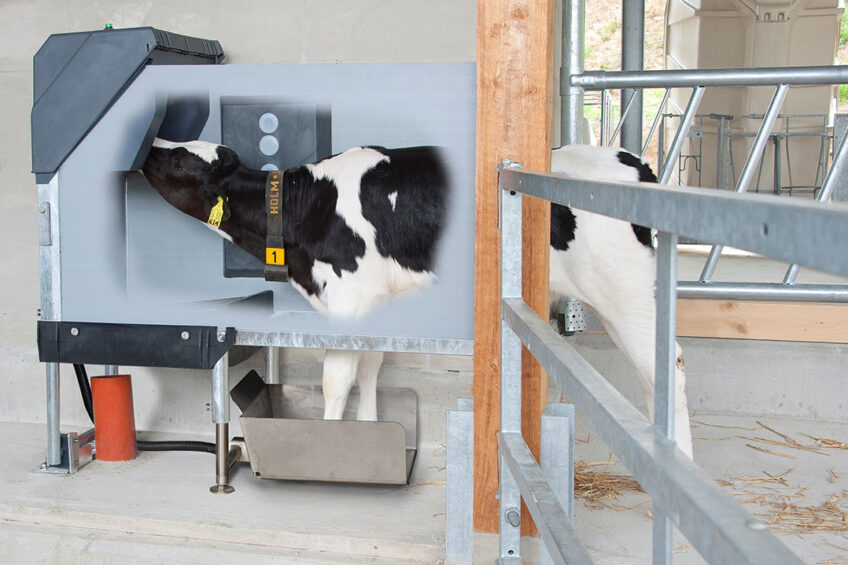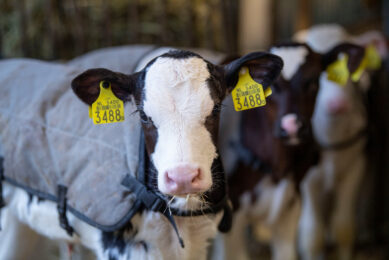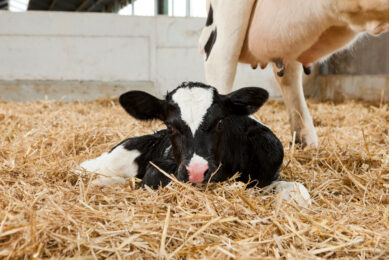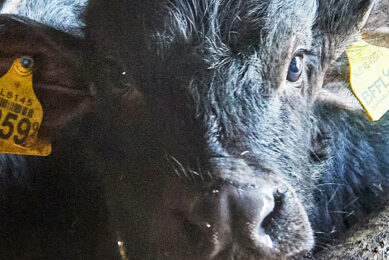Higher milk yield through calf metabolic programming

Studies have shown that intensive calf feeding and even an oversupply of energy can result in better growth, a lower first calving age by 1-2 months and a higher milk yield of approx. 500 kg.
At birth, many organs in the calf are not yet fully developed, but by providing more energy and a better supply of nutrients, the development of these organs is assisted and form the basis for good performance and a higher milk yield later.
A cow’s metabolic memory
Germany’s Holm & Laue believes we need to rethink the approach to calf feeding and reports that the calf’s metabolism has a ‘memory’ and that its body ‘remembers its programming’ from early in its life. When it is exposed to a high ‘energy pulse’ for a certain period of time during its early life, insulin is released, which is necessary for a highly efficient body. Later, the cow can optimally support the metabolic processes of the body by producing a high volume of insulin.

Colostrum is critical
To develop optimal immunity, a calf must consume more than 200g of immunoglobulin IgG within the first hour of life. Assuming only about 40% of the milk from the first milking has an IgG content of more than 50g IgG per litre, the calf must drink over 4 litres of high-quality milk right after birth. Faber et al. found that calves that drink 4 litres of colostrum produce more milk later as grown-up cows (1st lactation: +950kg; 2nd lactation: +1.650kg).
Energy required by the calf
According to the German Agriculture Association DLG, a 50kg calf with a daily growth of 400g requires approx. 15-16 MJ ME per day, which corresponds to about 6 litres of whole milk or 1,000g of milk replacer. But, considering the above-mentioned metabolic effects, a 400g daily weight gain is not sufficient, and in fact the American Dairy Calf and Heifer Association states that the goal should be a doubling of the body weight until weaning at 8 weeks, and thus a daily weight gain of 1,000 g. However, growth rates of 1,000g per day require an energy intake of more than 20 MJ ME per day, which means more than 8 litres of whole milk or at least 1,250 g of milk replacer.
Metabolic feeding curve
The feeding curve in the Figure (below) foregoes a gradually increasing feeding phase and instead feeds 8-10 litres of milk per day during the start phase, although the calves may not consume the entire amount at the beginning. The concentration starts with 175 g calf milk replacer (CMR) per litre. The daily intake of CMR in the first start phase is 1,400 g and higher, enabling the calves to achieve a daily weight gain of 1,000 g or more. With this high supply, the calves convert additional CMR quantities into body mass at the ratio of 1 kg CMR.

This metabolic feeding curve starts the weaning of the calves with an early reduction of CMR concentration. This ensures that the calves are prepared early on for the intake of concentrate feed and marks the start of the weaning phase. The amount of energy supplied is slowly reduced, which motivates the calves to satisfy their hunger pangs by consuming dry feed.
Join 13,000+ subscribers
Subscribe to our newsletter to stay updated about all the need-to-know content in the dairy sector, two times a week.










